Contents
Guide

THE BRAIN BEHIND PAIN
THE BRAIN BEHIND PAIN
Exploring the Mind-Body Connection
AKHTAR PURVEZ, MD
ROWMAN & LITTLEFIELD
Lanham Boulder New York London
Published by Rowman & Littlefield
An imprint of The Rowman & Littlefield Publishing Group, Inc.
4501 Forbes Boulevard, Suite 200, Lanham, Maryland 20706
www.rowman.com
86-90 Paul Street, London EC2A 4NE
Copyright 2022 by Akhtar Purvez
All rights reserved . No part of this book may be reproduced in any form or by any electronic or mechanical means, including information storage and retrieval systems, without written permission from the publisher, except by a reviewer who may quote passages in a review.
British Library Cataloguing in Publication Information Available
Library of Congress Cataloging-in-Publication Data
Names: Purvez, Akhtar, author.
Title: The brain behind pain : exploring the mind-body connection / Akhtar Purvez, MD.
Description: Lanham : Rowman & Littlefield Publishers, [2022] | Includes bibliographical references and index.
Identifiers: LCCN 2022023334 (print) | LCCN 2022023335 (ebook) | ISBN 9781538172803 (cloth) | ISBN 9781538172810 (ebook)
Subjects: LCSH: PainPhysiological aspects. | PainPsychological aspects. | Chronic pain. | Affective neuroscience.
Classification: LCC QP401 .P87 2022 (print) | LCC QP401 (ebook) | DDC 612.8dc23/eng/20220720
LC record available at https://lccn.loc.gov/2022023334
LC ebook record available at https://lccn.loc.gov/2022023335
 The paper used in this publication meets the minimum requirements of American National Standard for Information SciencesPermanence of Paper for Printed Library Materials, ANSI/NISO Z39.48-1992.
The paper used in this publication meets the minimum requirements of American National Standard for Information SciencesPermanence of Paper for Printed Library Materials, ANSI/NISO Z39.48-1992.
To my mother and to the memory of my father.
By living an exemplary life, they inculcated me with the virtues of kindness, selfless service, and love of the fellow human being.
Yeli asi daag tacchun hyotmaagan,
sontus di yut asinaad.
Saam dilan heth, wash nariankod,
gulshan koraabad
When winter tended to gnash our wounds,
we evoked spring.
Assayed our hearts, flexed our arms
brought the garden to bloom.
WIZE WIZE BY MUZAFFAR AAZIM, KASHMIRI POET AND SCHOLAR
WELCOME TO THE NEW FRONTIER IN HUMANITYS BATTLE against pain. We have met the enemy, as the saying goes, and he is us. In other words, we have learned that pain is not some malevolent outside force, but rather a product of our own inner circuitry. And were discovering more about that every day.
As a physician specialized in treating pain, I find this revelation both inspiring and intimidating. It is inspiring because it holds out the hope of help for so many people; its intimidating because every step forward brings with it a host of new questions and challenges.
Knowledge is power, we are told, and that statement is hard to refute. Yet the act of knowing can also bring a measure of comfort, for what we most fear is usually what we least understand.
Thats why Im writing this book, because pain remains one of lifes great puzzlesnot just for the average person, but for the scientific and medical community at large. At the same time, the pursuit of that mystery has pried open yet another door into the endless wonders of the human bodywonders that most of us never think about.
I happen to focus on pain in my practice, but it is an unwelcome gate-crasher in virtually every other medical specialty. Be it orthopedics, neurosurgery, oncology, neurology, internal medicine, obstetrics, gynecology, or any other healing discipline, the question of how much a condition or procedure is likely to hurt is often one of the first things that most patients want to know.
Which only makes sense. Part of that arises from our natural fear of pain; it is also one of the only indicators we have of the status of an injury or illness. Most of us dont ask for medical help unless something hurts us. Then, once we began taking medication or following some other advice from a doctor, we expect the pain to quickly and steadily recede.
That doesnt always happen with some of my patients, though, because chronic pain has a way of reaching a plateau and stubbornly defying all efforts to make it go away. For health-care providers who have come to rely heavily on their ever-evolving diagnostic tools, this can create a crisis of confidence.
What can we make of long-healed injuries that still hurt or of pain that seems to attack from out of nowhere? In some cases, we can stare at an MRI all day without getting answers.
Most doctors hate to say, I dont know, and sometimes their reactions to these chronic pain anomalies have not reflected well on their profession. Rather than admitting that they didnt have all the answers, some responded by blaming their patients. Its all in your head, they told them.
Eventually, we discovered that was actually true.
Many afflictions of the human body are relatively simple to explain and combat. With chronic painand, indeed, pain in generalconducting an investigation into its cause can be like wading into a swamp.
Back in the 1970s, medicine was partly represented in popular culture by a TV program called Marcus Welby, M.D . Dr. Welby, portrayed by Robert Young, seemed to deal with only one patient a week. He always spent considerable time consulting with that person, sometimes over coffee in the patients home, listening intently to his or her symptoms and life issues. If he ever sent out a bill, it wasnt mentioned.
Its doubtful that such a benevolent and available healer ever existed in real life, and especially not now. Even before the COVID-19 pandemic swept in like a tidal wave, todays physicians were dealing with a severe time crunch.
One day, everyone will be famous for fifteen minutes, the artist Andy Warhol once predicted. As it turns out, that is now the average time allotted for the physician to spend with each patient.
Forget leisurely coffee in a patients kitchendoctors today are lucky if they can grab a cup on the run from the nearest vending machine.
What has evolved is a no-win situation for any physician with an office practice. Those who are gently shooed out after the suggested fifteen minutes frequently feel shortchanged, but if an interaction takes longer, it throws a tightly scheduled assembly line off its track for the rest of the day. I cant even imagine how Dr. Welby would have dealt with chronic pain cases.
For those of us on the medical front lines, each pain-stricken visitor is merely a blip in a long day. We pull out an electronic device, transmit a prescription to their pharmacy, and perhaps never think about that person again until his or her next visit or anxious phone call. We are compartmentalized out of necessity, and each patient leaves that compartment as he or she walks out of the office door.
The problem is that pain generally follows that patient home, hitching a free ride on a compromised body. Then, once there, it extends its tentacles into every area of life.
Dr. Peter Abaci, author of Take Charge of Your Chronic Pain , was taught firsthand about the ubiquitous and all-consuming nature of pain when he tried to put a knee operation behind him.
Getting from place to place was a struggle, he wrote. I felt trapped in my body. Climbing up and down the stairs in my house exacerbated the pain. Even simply watching the nightly news, linked to the parade of disastrous events and dire predictions, seemed to make my knee hurt more. I felt like my entire life was unraveling.

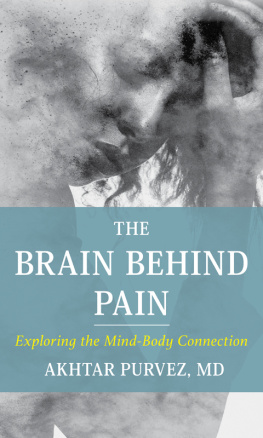

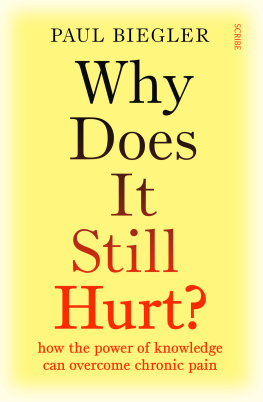
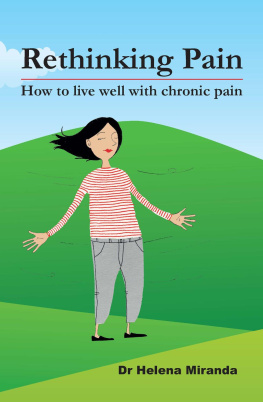

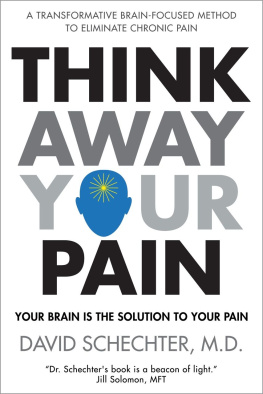
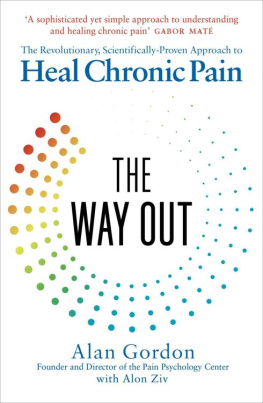
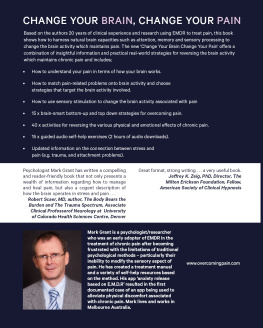
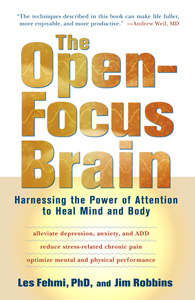

 The paper used in this publication meets the minimum requirements of American National Standard for Information SciencesPermanence of Paper for Printed Library Materials, ANSI/NISO Z39.48-1992.
The paper used in this publication meets the minimum requirements of American National Standard for Information SciencesPermanence of Paper for Printed Library Materials, ANSI/NISO Z39.48-1992.